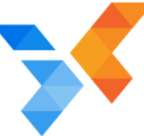Opportunities for Human Motion Analysis in Healthcare
On Friday 13th, 1995, I woke up and couldn’t move my legs. The day before I felt a bit weak at school and asked my dad to pick me up. I spent the day in bed, leaving only to enjoy mushroom pizza from Mama Lombardi’s. Still not feeling great, I went back to bed and fell asleep early. The next morning, around 4am, I woke up and couldn’t move my legs. I called my mom for help. At first she just thought I was weak and went to lift my legs herself. Dead weight. She now called my dad and my older brother to pick me up, take me the car, and drive immediately to the hospital. I remember clearly driving down the street and passing out just before the light turned green. I was 13. For the next 2 weeks I was quadriplegic, then, slowly recovering, paraplegic. For the first 6 weeks I was in Stony Brook hospital, then spent another 6 weeks in a rehab hospital, St. Charles.
Long story short, I had suffered some sort of autoimmune illness that destroyed my myelin sheaths. I had to learn to walk again, step by step (I remember taking my first step, fittingly, the day before New Years — and my big brother’s birthday— on December 31st 1995).
This is all to say that applying technology to the way people “move, perform and play”, as our tagline goes, is of deep interest.
Ideas Lab was founded with the belief that our technology can be applied across multiple industries, with healthcare a strong fit. Each of the images below have been processed through our image upload system, which you can find here:
Surgical training
According to a recent New York Times article, medical schools are noticing a decline in students’ dexterity, possibly from spending time swiping screens rather than developing fine motor skills.
“There is a language of touch that is easy to overlook or ignore. You know if someone has learned French or Chinese because it’s very obvious, but the language of touch is harder to recognize.” said Dr. Roger Kneebone, professor of surgical education at Imperial College London.
The amount of practice is highly correlated with skill, and due to various reasons such as the introduction of the maximum 80-hour workweek in 2003 (which led to less time to practice critical skills), there is a round a year less of time operating as a resident.
By utilizing hand analysis — a capability of human pose technology our system is based on— a surgeon’s skill can be quantified in a whole day way, combined with trainer observation. Currently, it is exceedingly difficult to objectively measure the performance within a surgical training program without requiring a skilled physician’s observation for each practice (e.g., sponge cutting, knot tying, etc.). While there are several technologies which could facilitate this (i.e., eye tracking, electromyography, etc.), integrating this technology in a low-cost, seamless manner is still difficult for the majority of hospitals worldwide.
Ideas Lab has developed an AI-based system which tracks movement of a device within a given XYZ axis; this technology can be combined with various other systems also developed by Ideas Lab, notably facial recognition and eye tracking. The movement of a surgeon’s hand (and scalpel) together with where a physician decides to look when analyzing a specific situation can be tracked using various machine vision-based technologies. Quantifying movement, both the hand/scalpel and eye gaze can theoretically be correlated with the skill level of the physician.
Physical therapy
By applying machine vision to a physical therapy session, the therapist, patient, doctor, and even health insurance, can benefit by analyzing the progress made both across time and on specific exercises (where, for example, a targeted stretch or movement can be compared against the actual movement of the patient at a specific point).
Additional contextual information can be integrated, such as local weather conditions (my grandmother always said she would know if it was going to rain before the meteorologist), drug regimen, time of day, etc. A scoring system could be generated for physical therapy clinics, helping patients decide where to go or even which therapist to work with. Getting even more granular, specific exercises can be ranked for effectiveness and, because they are recorded, the best examples of specific trained movements can be cataloged for future use. Yet another example of applying HMA in a physical therapy context would be at-home therapy, where patients could continue their exercises under the (remote) eye of their therapist, who, in turn, can observe — aided with biomechanical data points — and make recommendations between sessions.
Personalized Yoga
According to thegoodbody, there are around 36 million Yogi’s in the US, and 10x that number worldwide. Amazingly, the number of “golden yogi’s” — those 50+ years old —make up around 40% of the total US market, an increase of 300% between the 2012–2016.
Of course the biggest opportunity in the yoga space is at-home yoga, where newbies and experts alike can record themselves perfecting the warrior stand certain that their movement and position is correct based on a specific HMA-based score that can be generated. While there is a lot that can be offered in group sessions, individual sessions through HMA can provide both the flexibility (pun intended) in time and place for the practitioner as well as the assisted movement that would otherwise only be provided by a coach standing near.
ABOUT IDEAS LAB
Ideas Lab is an innovation lab and start-up studio building proprietary artificial intelligence, machine vision, and human motion analysis technologies. Today, while developing a suite of AI-based solutions, we are building a network of corporate and academic partners who will support our mission in improving human performance through advanced technology. Visit us to learn more or contact us directly at jesse@ideaslab.com.
